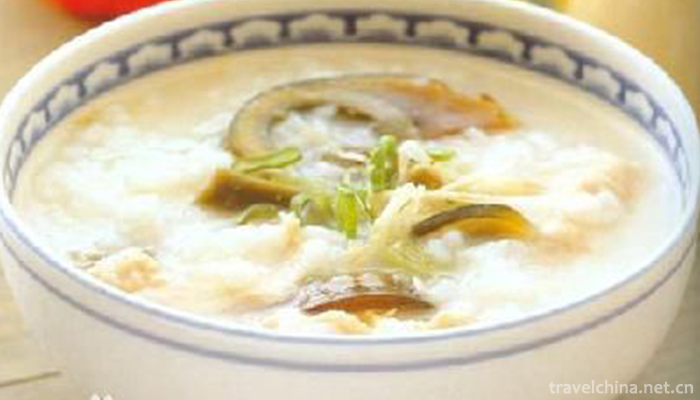Eight treasures porridge
Babao porridge is a dish of Manchu and Han Dynasty. It tastes sweet and delicious and enjoys a high reputation.
Making raw materials
Jiangmi 150g, red beans 75g, mung beans 75g, jujube 50g, lotus seeds 50g, peach kernels 50g, peanut kernels 50g, chestnut 50g, alkaloid 0.5g.
Making process
1. Wash red beans and mung beans and put them in two small aluminium basins separately, add water, no more than 4 cm of bean noodles, boil for 1 hour, the skin of beans bursts open and the soup of beans is ready to boil; add lotus seeds to alkaloids, brush them with clean water, remove the skin, poke out the lotus heart and wash them; peel off the inner and outer layers of chestnuts, wash them; peel peanut kernels, break them into two halves; soak peanut rice in a boiling water basin for 10 minutes. Minutes, pinch off the skin; wash and nucleate the jujube; wash the rice with clean water.
2. Pour clear water into a copper pot and boil it in a vigorous fire. Add rice, red beans, mung beans, lotus seeds, chestnuts, peaches, peanuts and jujubes. Boil them again. Then boil them over a low heat for about 30 minutes until the rice juice is thick.

0 Questions
Ask a Question
Your email address will not be published.